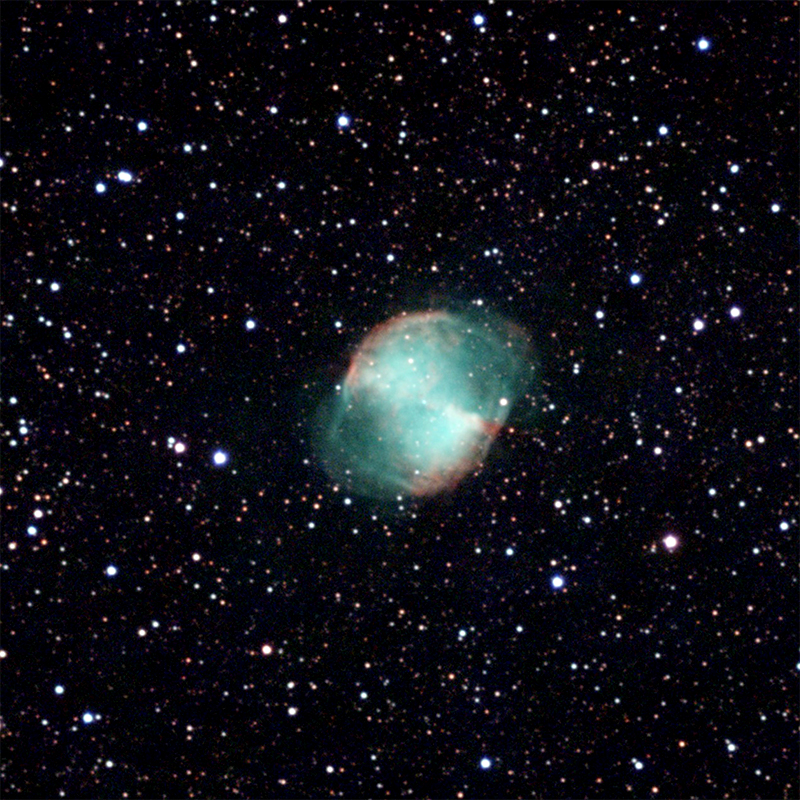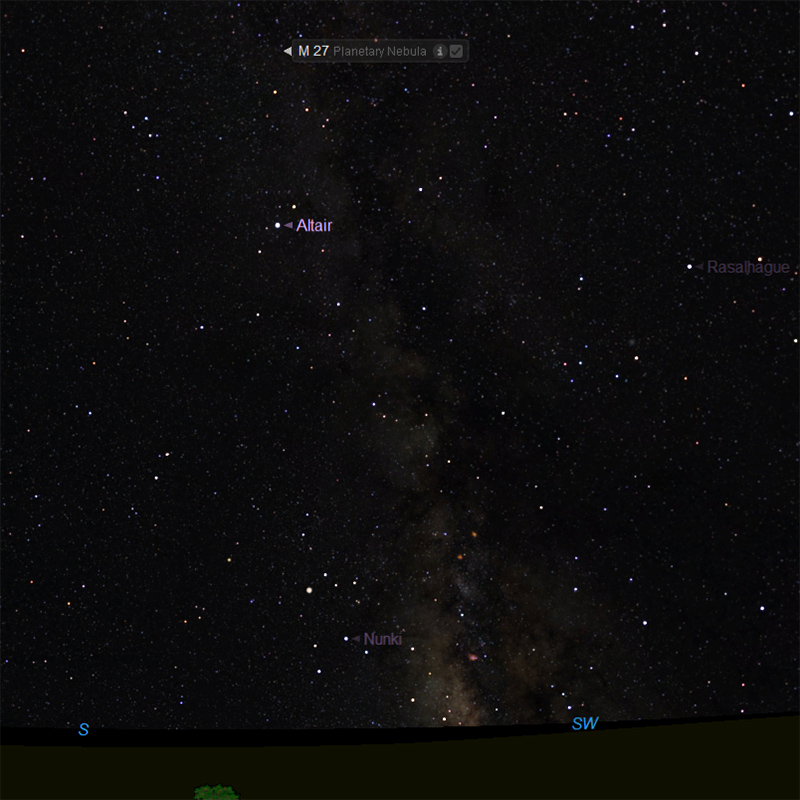M27 - The Dumbbell Nebula

Credits: Keith Turnecliff, Long Itchington
Messier 27 (M27), also known as the Dumbbell Nebula, Diabolo Nebula or Apple Core Nebula, is a planetary nebula.
The Dumbbell Nebula is large in size and quite bright, which makes it a popular object among amateur astronomers, as it can be seen in binoculars and small telescopes.
It covers an area of 8 by 5.6 arc minutes of apparent sky and has a linear radius of 1.44 light years. The nebula’s faint halo stretches out to more than 15 arc minutes.
M27 lies at an approximate distance of 1,360 light years, or 417 parsecs, from Earth and has an apparent magnitude of 7.5. It has the designation NGC 6853 in the New General Catalogue.
Messier 27 is the second brightest planetary nebula in the sky, second only to the Helix Nebula in Aquarius,
but probably the easiest one to observe because it has a higher surface brightness than the Helix and is therefore easier to find.
The name Dumbbell comes from the English astronomer John Herschel, who observed the nebula in 1828 and compared its shape to that of a dumbbell.
Facts about M27 by Keith Turnecliff
Also known as the Dumbbell Nebula, M27 resides 1,360 light-years away in the constellation Vulpecula.
The nebula can be spotted with a small telescope most easily in September.

Best viewed with resolution 3840 x 2160.
Credits: Image courtesy of Starry Night Pro Plus 8, researched and implemented by Keith Turnecliff.